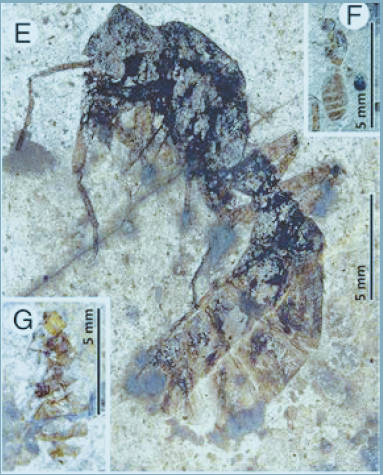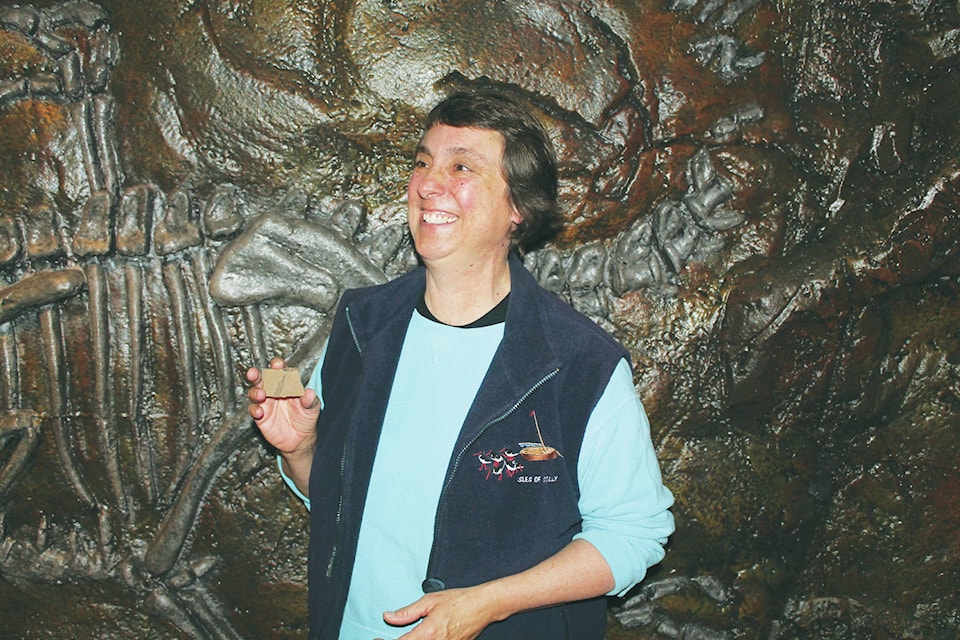A Princeton woman out for a casual scavenger with the local fossil club two years ago made a find that is rocking the world of paleontological insects.
Kathy Simpkins not only discovered a 50-million-year-old fossil, she unearthed a new – and very, very old - bug.
As a result, a previously unknown species of scorpionfly now bears her name - Eomerope simpkinsae - and she’s in for a little bit of scientific fame as the discovery and its implications are part of a paper released this month by The Canadian Entomologist.
“I love rocks and fossils but I’ve never found something that is this significant and it’s great to bring it forward to science,” she said in an interview with The Spotlight.
“I was with the Princeton Rock and Fossil Club and we were looking for fossils in the old shale pile [at the former Allenby Mine]. It was so random. It was this time of year. I was just flipping through a pile of rocks – flip, flip, flip – and then a wing.”
Related:
Simpkins described the discovery as “neat.” Without understanding its value she donated it to the Princeton Museum where she is a director and volunteer, with about 30 years experience in fossils.
When Dr. Bruce Archibald, a paleontologist with Simon Fraser University and the Royal BC Museum, was passing through the facility she made a point of showing it to him.
“I’ve seen many tens of thousands of fossils,” said Archibald, “and very rarely have I seen a find of this kind.
I knew right away it was a wonderful thing.”
The fossil is significant, he said, as similar specimens have only been found in the Cache Creek area of the province and in Russia.
“This really brings homes the connection between BC and Russia,” he said. “Fifty-three million years ago East Asia and North America were connected by land across the Bering Strait…You could have walked from Vancouver to Vladivostok through forest without getting your feet wet.”
Archibald co-authored the article for The Entomologist with Alexandr Rasnitsyn, of the Russian Academy of Sciences in Moscow.
There is only one living species of the scorpionfly, found in the coastal forests of Chile, he added. “Like ancient BC [it] has a temperate mid-latitude climate, but with mild winters.”
The Princeton Museum eventually transferred curatorship of the fossil – which is about two inches square – to the Royal British Columbia Museum.
The fossil discovered by Kathy Simpkins is the wing of a previously unknown species of the scorpionfly.
The Princeton Museum will display a finely-made copy of the fossil, as well as a static display provided by the Royal Museum.
Archibald said this discovery will add to Princeton’s world-wide reputation for fossils, noting the first insect fossils unearthed in BC were found here more than 150 years ago.
Numerous residents have made important discoveries in the past, he said.
“Citizen science has been a really important thing here.”
Related:
Another recent area find, a fossilized ant discovered by Ed Staples and Nienke Klaver of Coalmont, is currently under study. The closest living relative of that insect lives only in Australia, said Archibald.
From looking at fossils “we sort of get a picture of how life has sorted itself. Understanding the history of how things have changed helps us understand where we are and where we are going,” he said.
“I guess the story here is that Princeton fossils are making a big, world-wide impression.”
Museum manager Terry Malanchuk said the Eomorope simpkisae will elevate the profile of the Princeton Museum, and increase interest and focus on the area’s resources.
Simpkins said “I don’t think we are going to have busloads of people from Vancouver rock clubs [but] paleo-bug people will say ‘Whoo Princeton.’”
To report a typo, email:
publisher@similkameenspotlight.com.
andrea.demeer@similkameenspotlight.com
Like us on and follow us on .




